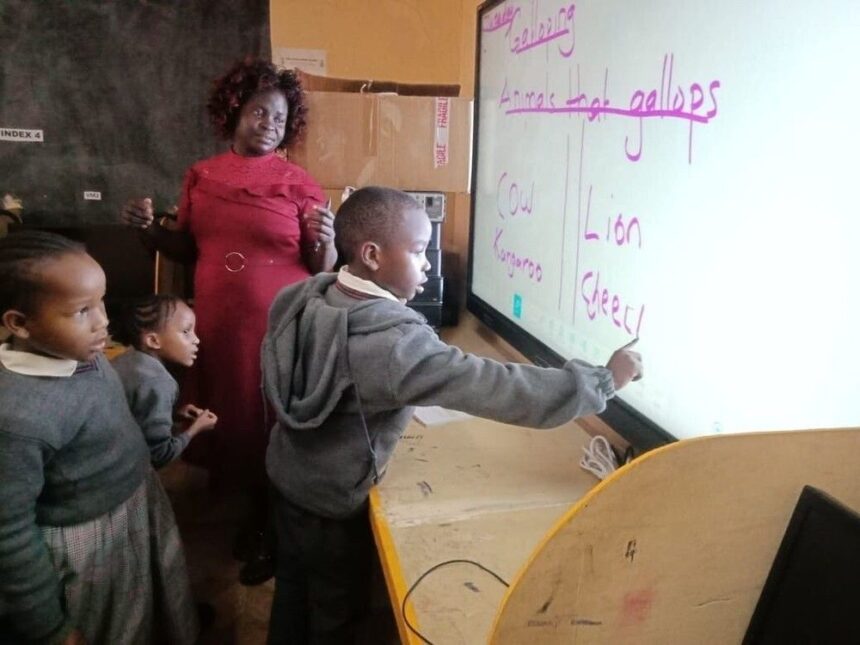The pandemic forced Canadian classrooms into makeshift digital solutions, but what began as emergency measures has evolved into something far more intentional. Walking into Megan Chopra’s Grade 5 classroom in Calgary today feels like stepping into education’s future—students interact with a massive touchscreen at the front of the room while simultaneously connecting with peers hundreds of kilometers away.
“We’re not just teaching differently—we’re teaching better,” Chopra tells me during my visit to observe Alberta’s expanding educational technology initiative. “These aren’t just fancy whiteboards. They’re windows to possibilities we never imagined before 2020.”
The smart board technology transforming Chopra’s classroom represents a $42 million investment across three provinces, with significant funding from both provincial education departments and technology partnerships with Canadian firms like SMART Technologies. The initiative aims to bridge geographical divides that have long challenged Canada’s vast educational landscape.
Watching students manipulate data visualizations about the Great Lakes watershed in real-time—collaborating simultaneously with classrooms in Thunder Bay—illustrates how these tools transcend typical video conferencing. The technology allows for genuine collaboration rather than passive viewing.
“We used to think remote education meant compromise,” says Ontario Education Minister James Henderson. “This initiative proves we can actually enhance learning by connecting diverse communities with shared tools and experiences.”
The economics behind these investments tell an interesting story. While the initial hardware costs appear substantial—approximately $5,000 per classroom for fully-equipped smart board systems—education economists point to long-term savings. A report from the Canadian Council for Educational Technology indicates these systems reduce textbook costs by 37% while decreasing administrative overhead through streamlined digital assessment tools.
What makes this initiative particularly Canadian is its focus on geographical inclusion. In Manitoba, remote Indigenous communities now connect with urban classrooms daily, creating cultural exchange opportunities previously impossible due to distance constraints.
“My students now learn alongside kids from Peguis First Nation every Tuesday,” explains Winnipeg teacher Derek Sanderson. “The technology becomes invisible after a while—they’re just classmates working together despite being 200 kilometers apart.”
Technical challenges remain, however. Broadband infrastructure continues to limit full implementation in approximately 23% of rural Canadian communities. The federal government’s Universal Broadband Fund has allocated an additional $150 million specifically targeting educational connectivity gaps, but implementation remains uneven.
Privacy concerns have also emerged as these systems collect unprecedented amounts of student interaction data. Calgary parent Sophia Williams voiced concerns shared by many: “We need to know who’s watching our kids learn and what’s happening with that information.”
In response, provincial education authorities have established data governance frameworks requiring parental consent for analytical tools while prohibiting facial recognition and certain behavioral tracking features.
The most compelling aspect may be the student response. Eleven-year-old Aiden Rodriguez demonstrates for me how he can annotate a mathematics problem from his tablet, with his work appearing instantly on the classroom’s main display.
“It’s way more fun to learn this way,” he says with characteristic pre-teen understatement. “We can see what everyone’s thinking, not just hear it.”
Teacher training represents another critical investment. Alberta has allocated $7.3 million for professional development specifically targeting educational technology integration. The province reports 78% of teachers now feel confident using these tools effectively, compared to just 31% in 2020.
“The technology itself isn’t the innovation,” explains Dr. Fatima Naqvi, educational technology researcher at the University of Calgary. “The innovation is how we’re reimagining classroom boundaries. These aren’t just digital tools—they’re community-building platforms.”
School administrators report unexpected benefits beyond academic outcomes. Attendance rates have improved 11% in participating rural schools, while disciplinary incidents have decreased significantly. Students report higher engagement levels and greater comfort participating in classroom discussions.
The initiative faces challenges beyond technology implementation. Educational inequality remains a concern, with wealthier districts able to supplement provincial funding with additional resources. Organizations like Canada Learning Code have launched complementary programs providing home technology access for underserved students, but gaps persist.
Looking ahead, educators envision these connected classrooms evolving beyond provincial boundaries. Plans for a cross-Canada virtual exchange program would allow students to collaborate on regional environmental monitoring projects and cultural studies.
“We’re building tomorrow’s Canada in these connected classrooms,” says Jennifer Wu, principal at Calgary’s Mountainview Elementary. “Students are learning that distance doesn’t have to mean disconnection.”
As the snow falls outside Chopra’s classroom window, her students remain connected to peers across the country, sharing perspectives on renewable energy solutions—a fitting metaphor for an educational approach designed to transcend the physical limitations that once defined Canadian schooling.
The future appears on display in these classrooms, but the most profound change may be invisible: a generation of students who see collaboration across vast distances not as a technological achievement, but simply as the natural way to learn.






